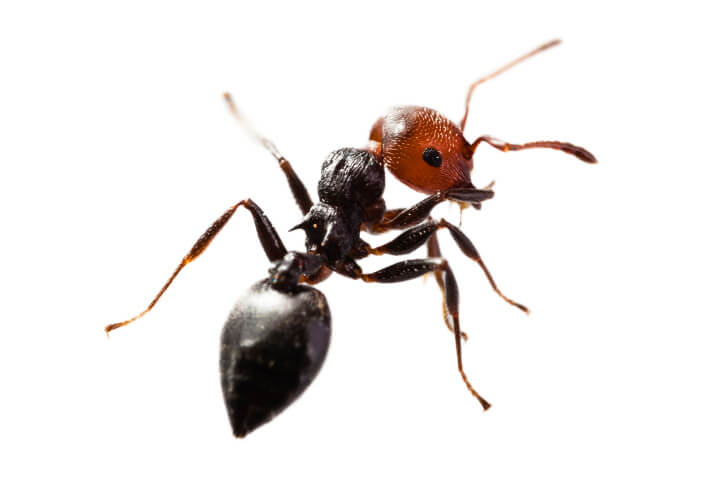
Does Ant Bait Work?
The number one tool professional exterminators use to get rid of home ant infestations is ant bait. Whether your house or apartment is overrun by common house ants or a more exotic species like carpenter or fire ants, the principle is the same. Ants live in large groups called colonies that are governed by a queen. Each ant has it own specific job – nurse, worker, scout, or clean-up crew. Only the scouts and workers regularly leave the nest, while all of the thousands of other ants generally remain in the nest. The best way to reach these nest-bound ants is through a potent and toxic ant bait.
How Ant Baits Work
Ant baits work by combining an attractive food source with a slow-acting poison. Worker ants eat the bait and then take a bit back into the nest. Because the poison is slow-acting, it doesn’t kill the ants right away, but gives them a chance to share the bait with other ants in the nest. Over time, every ant in the colony will feed on some of the bait and die.
Ant baits are often a better solution than aerosol sprays. The sprays tend to kill the foraging ants before they have a chance to bring the poison back to the nest and share it with the rest of the colony. Sprays are also more toxic to people and pets.
Types of Ant Baits
Both indoor and outdoor ant baits are available, and using both types will be necessary to fully eradicate the ant infestation. In-home ant baits are often designed with enclosed cases to hold the bait, which makes them relatively safe around children and pets. Professional exterminators will place the baits in areas where children and pets are unlikely to be, however.
In cracks or crevices where ants are entering a home or traveling between rooms, a pest control professional can inject gel ant bait. Using a tool similar to a caulking gun, the gel bait can be placed in controlled locations where other baits are impossible to use.
To target ants outdoors, an exterminator will place baits around the home’s foundation as well as near any ant hills that have been observed. The most commonly used outdoor baits are usually either granular or liquids enclosed in bait stations. Granular ant bait is distributed freely in any outdoor location where the ants may seek food. These small pellets will be picked up by the ants and carried into the nest as a food source.
The Process
Before placing the baits, an exterminator will inspect your entire home to observe where the ant infestation is heaviest. The baits will be placed in specific “target” locations to attract as many ants as possible. Professional bait stations often utilize a clear lid to allow the homeowner or exterminator to observe the ants as they feed and to note when the bait is nearly gone. Baits should be replaced as soon as the ants empty them.
Professional exterminators often use ant bait in combination with other ant treatments, but baiting provides the most long-term control. If the bait is kept available, most ant species will continue eating it indefinitely. Total extermination of a small colony can happen as quickly as two or three weeks, but completely destroying a very large colony may take several months of consistent baiting.